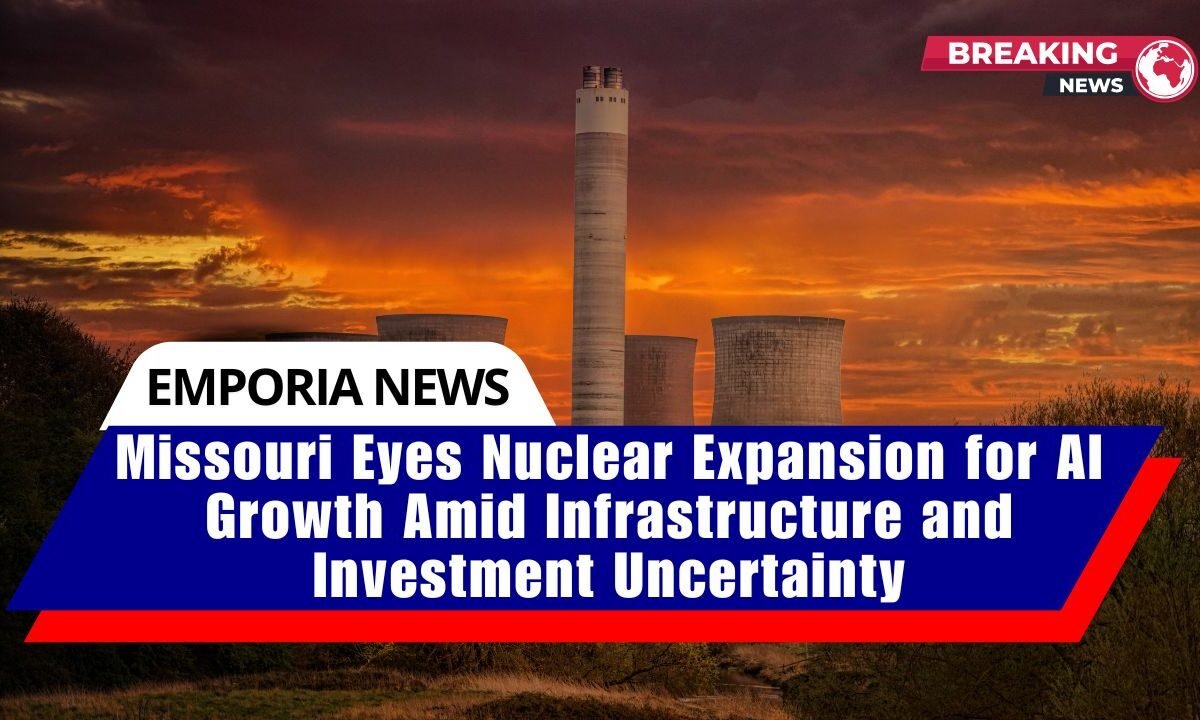Amid the surging electricity demands of artificial intelligence-driven data centers, Missouri is exploring a major expansion of nuclear energy. The state’s aging Callaway County nuclear reactor, in operation for over 40 years, has become the central focus of this initiative.
At a recent nuclear summit in Columbia, held at the Missouri Theatre and organized by the National Governors Association in collaboration with the Department of Energy, Missouri officials emphasized the need for enhanced nuclear capacity. The state was spotlighted as one of seven with strong nuclear development potential.
Doug True, senior vice president and chief nuclear officer at the Nuclear Energy Institute, stressed that nuclear power must be expanded if Missouri hopes to meet future energy needs tied to digital infrastructure growth.
Skepticism Over Feasibility and Commitments
Despite state enthusiasm, energy experts remain cautious about whether AI data centers will actually choose Missouri as their base of operations.
While a proposed site in St. Charles has gained attention, corporate commitments remain scarce, and the state’s infrastructure is seen as less competitive than other regions known for their data center ecosystems.
Subash Alias, CEO of the Missouri Partnership, noted that decisions to establish data centers depend on factors such as existing infrastructure, state-level incentives, and the increasing energy independence of such facilities. These elements cast doubt on the certainty of nuclear expansion as a viable path forward.
Potential Advantages of Nuclear Integration
Missouri officials, including Governor Mike Kehoe and leaders from the Department of Natural Resources, argue that nuclear power can offer energy security, reduced emissions, and a sustainable energy solution.
They believe this approach could diversify Missouri’s energy portfolio, especially as incentives for renewable energy have been scaled back.
Additionally, nuclear medicine research at institutions like the University of Missouri adds another layer of rationale.
The university’s new research reactor exemplifies how academic and scientific advancements can align with nuclear energy development, supporting both economic growth and public health innovation.
Risks and Financial Concerns Cloud the Path Forward
However, expanding nuclear infrastructure brings significant risks. Historical projects in states like Georgia highlight cost overruns, construction delays, and reliance on Construction Work In Progress (CWIP) policies—where ratepayers may bear costs before reactors become operational. These concerns prompt caution among both regulators and residents.
Critics argue that while nuclear energy may help reduce carbon emissions, its financial unpredictability and long build times could strain Missouri’s economy if not carefully managed.
Missouri’s nuclear energy ambitions reflect a bold response to anticipated AI-related energy needs, aiming to secure sustainable power and foster economic development.
However, the road ahead is uncertain. Without firm corporate investments, infrastructure readiness, and financial safeguards, the vision remains aspirational.
Whether the state commits to traditional nuclear plants or explores small modular reactors, future decisions will require balancing innovation with fiscal responsibility.
Missouri’s next steps in nuclear expansion will determine whether it can truly become a competitive data and energy hub in the AI era.




